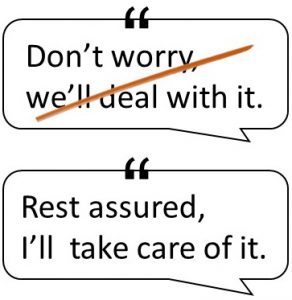Is Employee Ownership Right for Your Company?
4 top excuses for not offering skin in the game - and why you should ignore them
I confess - before I became a father, I sometimes found other people’s kids to be annoying. Especially when they sat behind me on a plane kicking the back of my chair. Or throwing a tantrum in a grocery store lineup. Thankfully, my patience and empathy miraculously increased when my wife and I had kids of our own. That’s why, when my clients express frustration about how difficult is to get team members to really care about their customers, I ask whether those employees actually own part of the company. Just like with children, when a company is your own, you are genuinely committed to helping it succeed. Here are the 4 most common excuses I’ve heard from business owners as to why they don’t offer employee ownership, and why it shouldn’t prevent you from offering key employees some skin in the game.
1. We already offer commissions
The problem with carrot and stick monetary bonuses such as commissions is they actually prevent the kind of creative thinking required to set your company apart from the competition. You’ll find a fascinating internet video on the subject by searching, “Dan Pink, motivation” which refutes our traditional assumptions about money as an incentive. Keep in mind that if your company offers commissions, then it’s likely that your competitors do as well. If your employees figure they can make higher commissions working for the company across the street, then your commissions aren’t building any employee loyalty. Zero.
2. Owner doesn't want to share profits
It’s understandable if a business owner doesn’t want to give up a portion of what he or she has created, but it’s stepping over dollars to pick up nickels. One of my clients, Ralph Ward, Chairman of Scott Builders, explained to me that early on he decided that to help generate loyalty from his best team members, he’d offer employee ownership. The result - one of the most dedicated teams of employees in Alberta’s commercial construction sector. This is an industry that, aside from a few recessions, has had endemic shortages of construction professionals. Offering share ownership enabled Scott Builders to keep a skilled set of workers and managers, and establish a distinct competitive advantage in an industry where a talent shortage has been such a chronic problem. By sharing ownership, you’re not slicing the proverbial profit pie into more pieces – you’re making the company more profitable and building a bigger pie.
3. It's expensive to buy out employees when they leave
This is true, but it’s also expensive trying to recruit and train new employees who don’t have the depth of experience of your senior staff. One way to help postpone buyouts (often for decades) is offering shares in your company only for high performers who are willing to sign a non-competition agreement. In other words, to receive shares, they commit that if they do quit, they won’t start-up or hire on with a competing company for a minimum period (generally 3 years). That way, you’re giving star employees something enormously valuable. In turn, high performing employees are giving you their loyalty for the foreseeable future and three years beyond.
4. Offering shares is too complicated
Yes, it takes time (and legal fees) to set-up a share structure that includes employee ownership. However, that investment is more than offset by the rewards of making your company significantly more sellable. The harsh reality is if you are a privately owned company, unlike publically traded corporations, potential investors are not lining up to buy out your shares so that you can retire in comfort. For one thing, private company shares aren’t nearly as liquid as those of publically traded companies, so investors are more locked in. They therefore want to know that you as the senior manager will remain to run things so they can get a return on their investment.
On the other hand, when you set up employees as partial owners, you are also creating a succession plan. By the time you’re ready to retire, employees (particularly senior managers) will have hopefully built up equity in the company that can be collectively leveraged to buy out your shares. It makes for a smooth transition and creates an obvious potential buyer in house. The bonus is you retire knowing that your proverbial baby is in good hands.
Bottom line - look on any street and you can likely see which homes are occupied by renters versus home owners. Owners generally care more and it shows. That’s also true of businesses whose employees are partial owners. They care more, and customers can tell. Employee ownership makes working with your company more rewarding (literally) for all stakeholders.
Tear up your Relationship Scoresheet
One of life’s harsh realities is that some people will take advantage of your generosity. Perhaps you’ve put more into a friendship than you received. Or you’ve played host more often than you were hosted. At work, you may keep your commitments to customers and co-workers, while they seem to take it for granted. You may even keep a mental scoresheet; what you give vs what you get. The problem is people quickly sense when we are protecting our self-interests, and they become just as guarded. So my suggestion is to tear up the relationship scoresheet. Be generous with your time and talent without keeping track. Smile first. Others may not reciprocate directly. Your reputation however, will be enhanced and your disposition will be improved. I think the idea of manifesting wealth and abundance by merely visualizing it and putting a picture of it on your fridge is nonsense. Instead, give more of yourself and you will – often by virtue of your reputation – be handsomely rewarded.
Concerned customer? Say this.
 Which is more important – acquiring customers or retaining customers? As a sales and service trainer for over 24 years, I’ve observed that the most profitable companies focus on keeping existing customers vs trying to find new ones. When you delight customers, they recommend you to others which organically leads to new business. That’s why, when customers express a concern, it’s important to equip your employees with tools to regain trust. Contrast two statements: Employee A: “Don’t worry, we’ll deal with it.” Employee B: “Rest assured, I’ll take care of it.” The first statement comes across as patronizing and bureaucratic. The customer is an adult and may not be worried, but they want you to be aware of an issue. The second statement is more positive, rest-assured. It conveys ownership using I, and implies humanity: take care of vs deal with. Could your employees be due for a tune-up on their customer retention skills?
Which is more important – acquiring customers or retaining customers? As a sales and service trainer for over 24 years, I’ve observed that the most profitable companies focus on keeping existing customers vs trying to find new ones. When you delight customers, they recommend you to others which organically leads to new business. That’s why, when customers express a concern, it’s important to equip your employees with tools to regain trust. Contrast two statements: Employee A: “Don’t worry, we’ll deal with it.” Employee B: “Rest assured, I’ll take care of it.” The first statement comes across as patronizing and bureaucratic. The customer is an adult and may not be worried, but they want you to be aware of an issue. The second statement is more positive, rest-assured. It conveys ownership using I, and implies humanity: take care of vs deal with. Could your employees be due for a tune-up on their customer retention skills?
We’re Number 18!
Ok, normally being Number 18 isn't something to brag about. In this case however, I'm thrilled and bragging. One of my articles was just name as one of the Top 99 Customer Service Posts for 2016 - on the entire planet! That doesn't sound like much until you note that a google search of Customer Service Articles will generate 83 million results. Now being #18 sounds pretty good. Check it out at Absolute Best Customer Service Posts in 2016
CEO warns to delight customers or lose your job
 Sometimes employees need a wakeup-call about wowing customers. Best if that message comes from the CEO. Certainly managers, supervisors, and outside specialists like me can remind team members about how no one can afford to have customers merely satisfied. Instead, customers need to think of you as REMARK-able. Satisfied customers think you're adequate. In other words, they're not really thinking about you at all. Nor are they recommending you; live or online or in social media. Average service makes you a commodity; pressuring your prices and profits. On top of customer service reminders from normal sources, it's the CEO who needs to refocus everyone's attention. Consider the example of Gary Friedman, head of Restoration Hardware Holdings, who, after discovering customers were cancelling orders, blasted off this building on fire message to all employees. Imagine receiving this Alarming message from the CEO .
Sometimes employees need a wakeup-call about wowing customers. Best if that message comes from the CEO. Certainly managers, supervisors, and outside specialists like me can remind team members about how no one can afford to have customers merely satisfied. Instead, customers need to think of you as REMARK-able. Satisfied customers think you're adequate. In other words, they're not really thinking about you at all. Nor are they recommending you; live or online or in social media. Average service makes you a commodity; pressuring your prices and profits. On top of customer service reminders from normal sources, it's the CEO who needs to refocus everyone's attention. Consider the example of Gary Friedman, head of Restoration Hardware Holdings, who, after discovering customers were cancelling orders, blasted off this building on fire message to all employees. Imagine receiving this Alarming message from the CEO .
Considering Customer Service Training? – Ask these 7 critical questions
Most managers and business owners know that in today's competitive marketplace, a key strategy to differentiate your company – without slashing prices and profits – is through your team’s service. Unfortunately, when it comes to customer service training, there are plenty of pitfalls that can undermine the best intentions. To differentiate your team’s service, ask these seven critical questions.
1. Is this a flavor of the month?
You can almost hear employees’ eyes rolling when the boss quotes a new business book or TEDx presentation the team is supposed to adopt to wow customers. It’s great to learn from books, seminars, etc. However, I encourage managers to introduce subtle changes without fanfare. Skip the buzzwords that eventually become passé. Employees more readily adopt subtle shifts than wholesale changes.
2. Will management be there?
Worse than bosses espousing too many shiny new customer service fads, is when leaders themselves don’t participate in training. There’s a word for managers who expect their staff to attend training, while managers remain in their offices. It’s called hypocrisy. It sends a mixed message that undermines employee buy-in.
3. Will this motivate my team?
Sometimes I’m referred to as a motivational speaker. Frankly, I can’t motivate anyone to do anything they don’t want to do. Pep-rally type messages get employees temporarily pumped-up, but it wears-off. That’s why when I work with teams, we brainstorm why… why certain approaches are better: for customers, for your organization, and especially for employees themselves. Talking about why we do something is just as important as what we do. Motivation is more about motive than mood.
4. What if some employees miss-out?
If you have turnover challenges or circumstances when not everyone can attend a training session, you’d be forced to bring-in trainers a lot. That’s not efficient. Instead, work with trainers who are open to having the session filmed. When we work with clients, I often arrange to bring in my videographer so that the subsequent footage can be used to train additional current and future staff at a fraction of the cost.
5. Is there reinforcement?
One-shot seminars have value; they are certainly better than nothing. Like any new skill though, there needs to be ongoing reinforcement. Better to work with a training company with the depth of resources to offer coaching tools beyond the seminar that will keep the message fresh.
6. Will it be relevant?
Managers tell me that when it comes to training, they haven’t got time for interesting. Interesting is everywhere on the internet. What they need are tools that are relevant. Some topics are more applicable to enhancing service than others. Listening to an adventurer or professional athlete talk about their careers may be entertaining, but realistically it has little relevance to real jobs that deal with satisfying internal and external customers. What engages participants is choosing a presenter who specializes in employee/customer interactions; interviews several leaders before the training, and incorporates those insights into the messaging. That way it becomes a fascinating session because it’s about most people’s favorite topic - themselves.
7. Will it engage my team?
This time the fault lies not with the message; but with the messenger. You’ve likely had the misery of being imprisoned in a meeting room listening to a monotone presenter assault you with PowerPoint punishment. Conversely, there are some speakers who know how to enthrall, entertain, and engage. They skillfully customize their training to make it resonate for that particular team. Question becomes, “Who are the best customer service speakers to use?” A few suggestions…
Anyone can pay for a flashy website and present themselves as a speaker. That’s no guarantee of quality. To ensure your speaker is as good as their website, ask your colleagues who they’d recommend. Then, see if the speaker has written anything about customer interactions to indicate they’re a thought leader. After all, training begins by shifting people’s thinking. Then, check if they have earned their Certified Speaking Professional (CSP) or Hall of Fame (HoF) designation. Those are the highest credentials in the speaking profession. Bringing in a CSP or HoF speaker is as close as you can get to a written guarantee that your team won’t be bored and that they’ll actually remember the message. Then give that speaker a call and get the wheels in motion. Trust them with your employees and start reaping the rewards of a team whose service is so remarkable – it makes your prices less relevant.
How do you set yourself apart with emails?
 A manager once explained to me, "My staff needs to know that just being friendly doesn't differentiate us." That's why in my seminars I remind teams to not merely be seen as their customer's friend; but rather to become valued as their customer's trusted advisor. Surprisingly, the trust meter is often advanced by little things. For example, when you send emails from your phone, does the message automatically attach a signature that details your full name and contact information? By including your contact information, you subtly convey three things to the recipient: 1) you are considering their convenience, 2) you pay attention to details and, 3) you are comfortable being held accountable; which is why you are disclosing exactly who you are and how you can be reached. Good return for the one-time 10 minutes it takes to add a signature line to mobile device emails.
A manager once explained to me, "My staff needs to know that just being friendly doesn't differentiate us." That's why in my seminars I remind teams to not merely be seen as their customer's friend; but rather to become valued as their customer's trusted advisor. Surprisingly, the trust meter is often advanced by little things. For example, when you send emails from your phone, does the message automatically attach a signature that details your full name and contact information? By including your contact information, you subtly convey three things to the recipient: 1) you are considering their convenience, 2) you pay attention to details and, 3) you are comfortable being held accountable; which is why you are disclosing exactly who you are and how you can be reached. Good return for the one-time 10 minutes it takes to add a signature line to mobile device emails.
If you Deal with Businesses
 Do your customers use your products or services for themselves, or for their organizations? As you know, in business to consumer interactions, your customers are buying for themselves out of their own pockets. However, when customers are buying on behalf of their organization (business to business), the money comes from their employer. That's why, when I do seminars for clients who provide products and services to companies, I remind them to focus on two (often overlooked) aspects of their service:
Do your customers use your products or services for themselves, or for their organizations? As you know, in business to consumer interactions, your customers are buying for themselves out of their own pockets. However, when customers are buying on behalf of their organization (business to business), the money comes from their employer. That's why, when I do seminars for clients who provide products and services to companies, I remind them to focus on two (often overlooked) aspects of their service:
- Making your customer's job easier
- Making your customer look smarter to their supervisor
Focusing on these two areas means that - even if your price is higher than others - your customers have a personal interest in doing business with you over your competitors. If they have to pay more of their company's money to work with you, it's still in their own best interest to do so.
How do I Cross Sell?
 Often the easiest way to grow your business is to pivot existing customers towards your other products or services. Your current customers already know and trust you. And they obviously have the funds to do business with you. The question becomes, "What's an easy effective way to cross-sell your other products or services?" While there are several approaches I share in my seminars, one of the simplest involves doing a disservice. You might for example, explain to a customer, "Knowing your situation and your overall objective to (fill in blank with customer's goal), I'd be doing you a disservice if I didn't at least make you aware that we have another (division/product/ service) that does that." The phrase, I'd be doing you a disservice if I didn't at least... positions the conversation less as pushing or pestering; and more as an effort to assist
Often the easiest way to grow your business is to pivot existing customers towards your other products or services. Your current customers already know and trust you. And they obviously have the funds to do business with you. The question becomes, "What's an easy effective way to cross-sell your other products or services?" While there are several approaches I share in my seminars, one of the simplest involves doing a disservice. You might for example, explain to a customer, "Knowing your situation and your overall objective to (fill in blank with customer's goal), I'd be doing you a disservice if I didn't at least make you aware that we have another (division/product/ service) that does that." The phrase, I'd be doing you a disservice if I didn't at least... positions the conversation less as pushing or pestering; and more as an effort to assist
Unshaven doesn’t mean unkempt
 We all get the men's fashion trend to sport the 5 o'clock shadow. Unfortunately, what we're also seeing is some guys taking this as license to show-up to work looking slovenly. You may think your appearance at work is your business. That would be true if it wasn't for the fact that your co-workers and customers are the ones who have to look at you. If you're getting less respect, authority, or consideration from customers than you think you deserve, start by looking in the mirror. Does it look like you put some effort into getting ready for work? Seriously, do you look well-groomed? If not, it tells the world you lack attention to detail, and you focus on your own needs while being oblivious to others. If someone forwarded this tip to you, take the hint.
We all get the men's fashion trend to sport the 5 o'clock shadow. Unfortunately, what we're also seeing is some guys taking this as license to show-up to work looking slovenly. You may think your appearance at work is your business. That would be true if it wasn't for the fact that your co-workers and customers are the ones who have to look at you. If you're getting less respect, authority, or consideration from customers than you think you deserve, start by looking in the mirror. Does it look like you put some effort into getting ready for work? Seriously, do you look well-groomed? If not, it tells the world you lack attention to detail, and you focus on your own needs while being oblivious to others. If someone forwarded this tip to you, take the hint.



